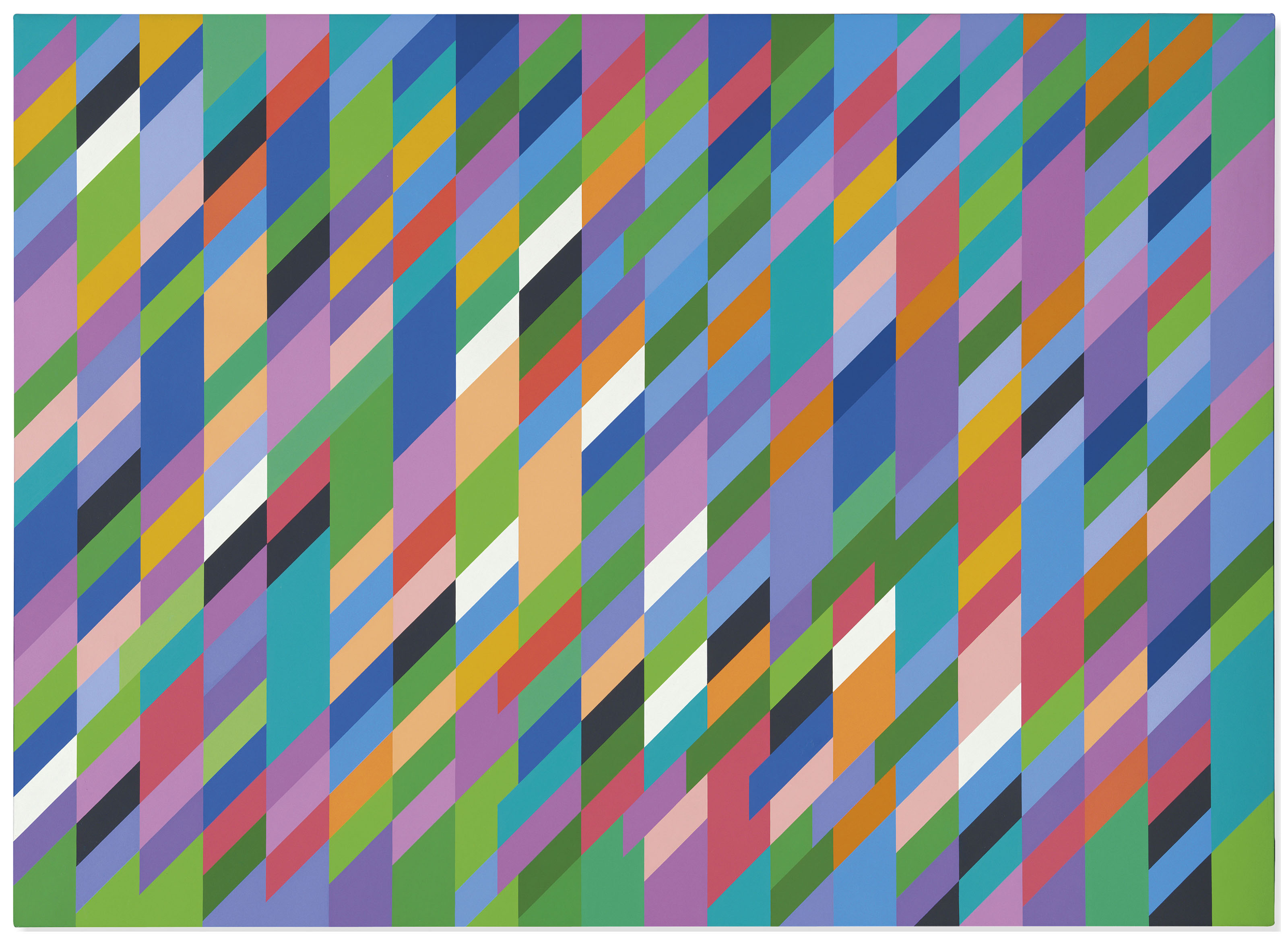
Christie’s London’s move to upgrade their Frieze Week sales at the expense of the June auctions took another step, if not an altogether decisive one, this evening. Until about 2013, Christie’s mixed-owner evening sales during Frieze (excluding the Italian art sales) had never made more than £30 million ($39 million). But in 2014 and again in 2016, with the single-owner sales from the Essl collection and then the Waddington collection added into the mix, the house found it could take £60-80 million ($78-104 million) in an evening during Frieze.
Last year, Christie’s abandoned the summer sales and staked everything on October, which gave it a £99.5 million ($130 million) sale in spite of failing with a £40 million to £60 million ($52 million to $78 million) Francis Bacon painting. This year, it offered a June sale, but only a lightweight version, and the continuation of this calendar restructure in future years was resting on the success of this evening’s sale.
After two lots were withdrawn and one transferred to the Italian sale, the pre-sale estimate (excluding the Italian auction) was £87.8–126.7 million ($114–165 million), far above Sotheby’s and Phillips put together. But even though only 8 of the 53 lots failed to sell, three of those were among the higher-valued lots, and the sale realized a slightly disappointing £84.6 million ($110 million), including commission fees (prices include the buyer’s premium; estimates do not).
A blurry photo painting of a skull by Gerhard Richter lacked the magic of the skull paintings offset by burning candles, and received no bids close to its £12 million ($15.6 million) estimate. Jeff Koons’s A Cracked Egg (Blue) (1994–2006), from his “Celebration” series was estimated within the same range of the last work from this series that sold at auction, in 2014, for £14.1 million ($18.4 million).
But the only bidder, Stefan Ratibor of Gagosian Gallery, pulled out at £8 million ($10.4 million), below the £10-15 million ($13–19.5 million) estimate. The other major upset was a painting by Mark Grotjahn from his “Face Painting” series, which had a punchy £6–8 million ($7.8–10.4 million) estimate and failed to sell. The salesroom, packed with Frieze fair goers, seemed relatively unperturbed, but some were counting the amount of bid money the auctioneer was turning down.
Albert Oehlen, Stier mit loch (Bull with hole). Courtesy of Christie’s Images Ltd.
On the bright side, an early 1986 painting by Albert Oehlen, Bull with Hole, from the collection of German dealer Paul Maenz, raced over estimates to fetch record £3.6 million ($4.7 million) from the artist’s dealer in Europe, Max Hetzler. Gagosian Gallery, which represents the artist in the US, then underbid a more familiar untitled abstract painting from 1989 by Oehlen before it sold for a double estimate £3.1 million ($4 million). As a measure of Oehlen’s market progress since Gagosian took a share in his representation in 2012, this painting last sold in 2011 for £168,500 ($219,000).
British art was the most consistently strong performer. The top lot of the evening was a full length Figure in Movement (1972) by Francis Bacon from the collection of Magnus Konow, a resident of Monaco, where Bacon like to go and gamble. After a couple of bids from London and New York gallery Per Skarstedt, it sold over the phone within estimate for £19.9 million ($26 million).
Francis Bacon, Figure in Movement (1972). Courtesy of Christie’s Images Ltd.
A collection of early works by Bacon, when he was practicing as an interior designer, sold out. One of the artist’s Art Deco-style rugs sold for £175,000 ($228,000)—a record for a Bacon rug—while a painted screen, possibly the only example extant, sold for a double estimate £2.4 million ($3.1 million), and a gouache sold for £488,750 ($637,000)—a record for a work on paper by Bacon.
Paintings by Hurvin Anderson, who is of Jamaican descent, continue to be in high demand and two examples exceeded their estimates this evening, one selling for £2 million ($2.6 million). When it was painted in 2003 it would have sold for not much more than £10,000 ($13,000). Another big mark up for a British artist was for Bridget Riley’s jazzy Close By (1992), which was bought in 1997 for £18,400 ($24,000), and now sold above estimate for £1.7 million ($2.2 million).
Hurvin Anderson, Country Club. Courtesy of Christie’s Images Ltd.
Also exceeding estimates in the British camp was a small early Howard Hodgkin painting from 1976-77, Night and Day, which had been bought by Eugene Thaw in 2001 for £80,500 ($105,000) and was now underbid by London dealer, Offer Waterman, before selling for a double estimate £332,750 ($433,000). And Antony Gormley’s six-foot iron figure Stand 1X, which was chased by art advisor Wentworth Beaumont, sold to a phone bidder for a double estimate £632,750 ($824,000).
After the sales, Francis Outred of Christie’s commented that although there seemed to be “a new discipline” in the market, with bidders observing “fine margins” at the top end and holding back from meeting reserve prices (as with the Koons egg), the £124 million ($161 million) for the whole evening, including the Italian sale, which came in on the low estimate at £39.6 million ($52 million), was the third highest for contemporary art at Christie’s in London.
The Italian sale also barely scraped by its low estimate. The top lot was an egg-shaped La Fine di Dio painting by Lucio Fontana, which was guaranteed and appeared to sell on a single bid for £16.3 million ($21.2 million).
Lucio Fontana, Concetto spaziale, La fine di Dio. Courtesy of Christie’s Images Ltd.
So while the total sales were high for Frieze week and good enough for Christie’s to repeat the formula next year, they were not so strong that they won’t be looking over their shoulders to see how Sotheby’s smaller sale will fare tomorrow, and how their respective annual figures will measure up against each other.